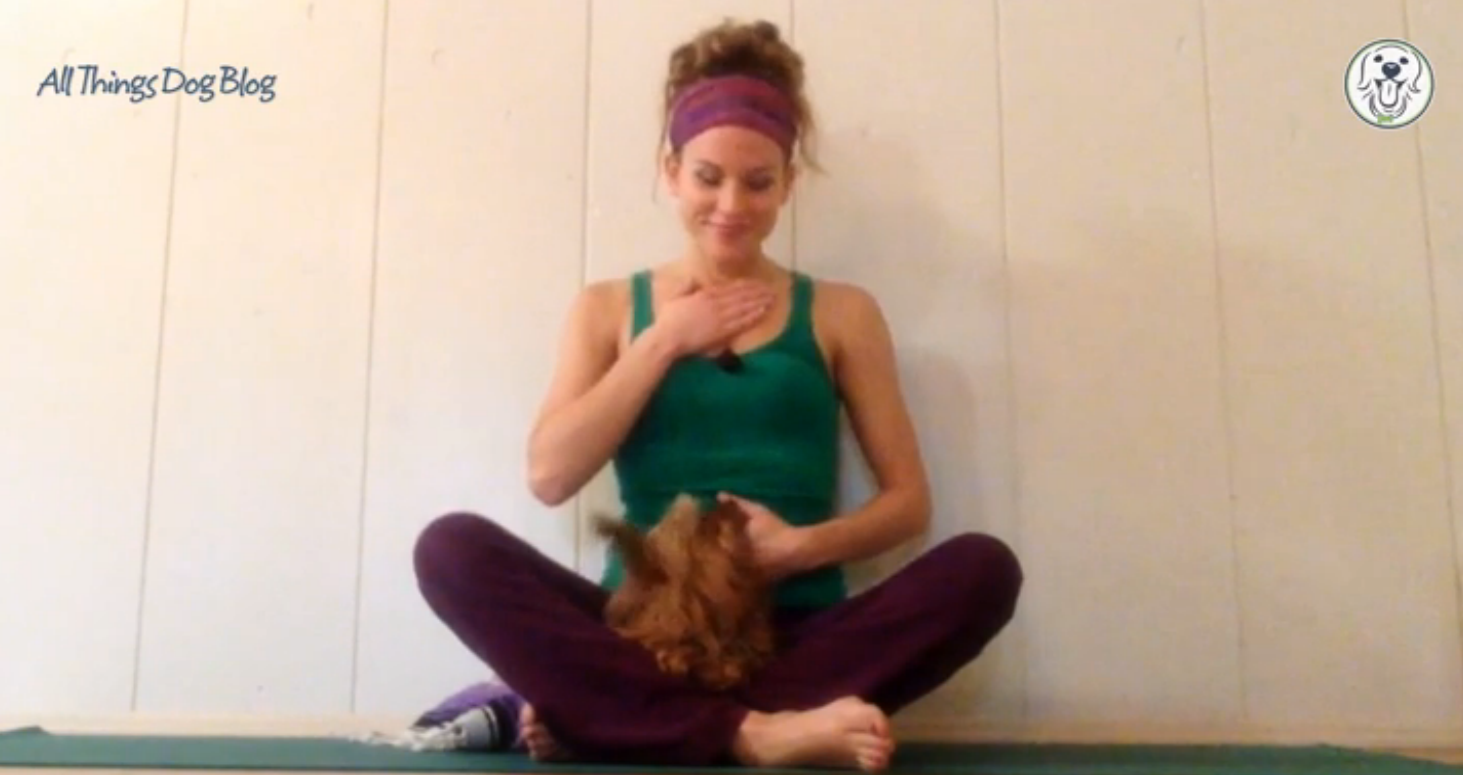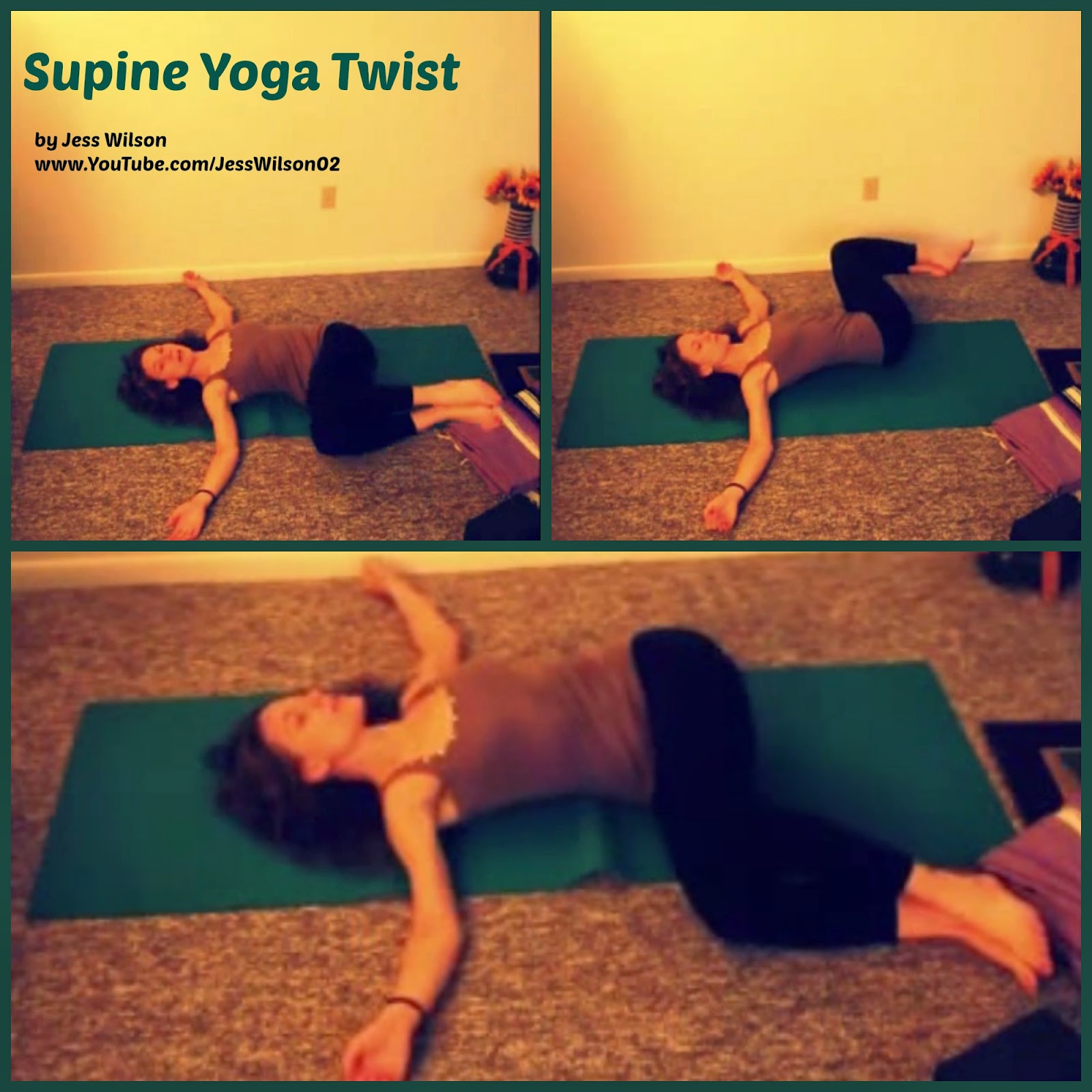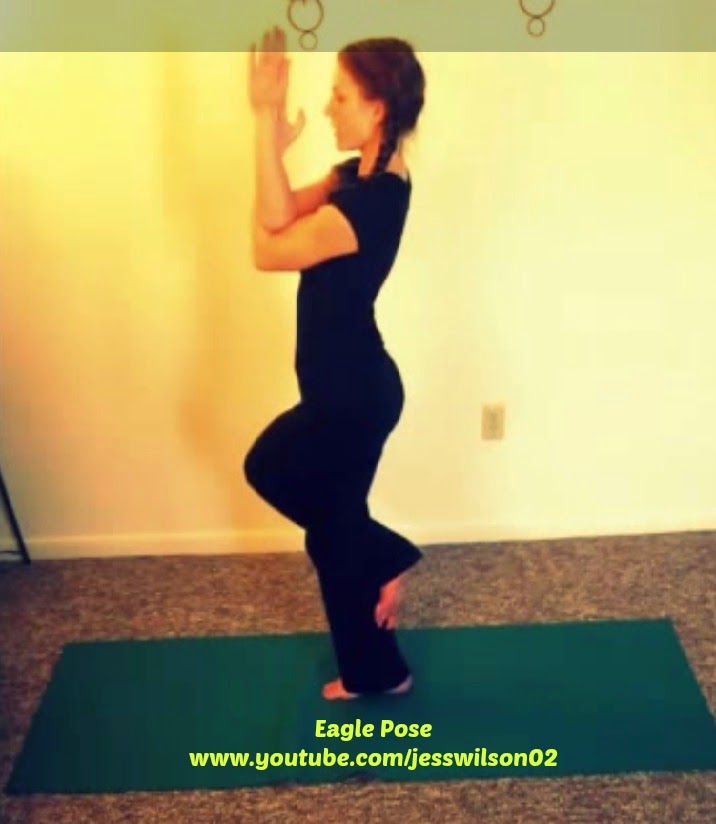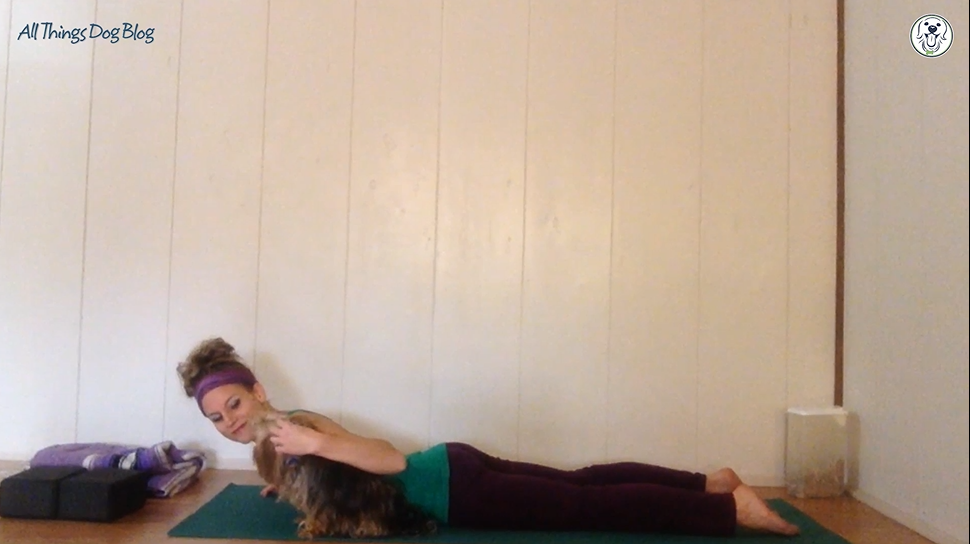Dogs
an interview with our doga instructor, Jess Wilson
The Eagle Pose is a great example of this. Some people absolutely cannot add in the ankle hook option to this pose because their hips are so tight. Without open, flexible hips, the knees cannot possibly be comfortable in the full Eagle Pose, which requires the ankle to hook around the standing leg. So, start the practice of the Eagle Pose with a different pose that helps to open the hips, like the Tree Pose, or start with an even more basic hip opener: Butterfly. Depending on how frequently you practice, and how consistently you practice, you will slowly, but surely, begin to notice an improvement in the flexibility of your hips, which will then make the practice of more challenging hip opener poses, like the Eagle Pose, not only more attainable, but more enjoyable.
Another one of my favorite things about the practice of yoga is the fact that it is a never ending journey. There is no final destination, no milestone that marks the end; to the contrary, yoga is all about the journey and what we learn about ourselves along the way.





If you're new to Doga or Yoga, please be sure to do these three things: (1) Get your doctor's permission to start a yoga workout, (2) Check with your vet to make sure your dog is able to participate in simple Doga exercises safely, and (3) visit our introductory post where I've outlined a few tips that will help your experience go more smoothly and enjoyable. Keep in mind that you can always stop if a pose is uncomfortable, returning to a relaxing pose.
- Fido Helps With Forward Fold
by Carrie Boyko, CEB Forward Fold is not one of my favorite poses, but it IS very important to moving forward in your yoga workouts. Rather than making a complete fold your goal, I recommend using some of last week's #doga tips, adding a chair or...
- #doga: Easy Seated Pose With Pups
by Carrie Boyko, CEB I guess I've fessed up by now. I've become a yoga geek. Not a Yogi, mind you. Just a #doga geek! Today I'm here to share some ways you can modify the Easy Seated pose, while practicing #doga with your dog. Some of my...
- Doga Pose 12: Knees To The Chest
by Carrie Boyko, CEB BufferCooling Down with the BoysThe Knees to the Chest pose is a super relaxing pose that officially begins the cool down of our Doga workout series. There are 3 poses left in the cool down and we'll eventually have a whole video...
- Doga Pose Number 2: Wide-legged Seated Forward Fold With Fido
by Carrie Boyko, CEB Buffer Stretching, Stetching, Ahhhhh!Oliver and I have been busy working on our Yoga practice, and we're beginning to notice a few improvements in my form as well as in his comfort level with joining me. He likes that I'm...
- Preparing For Doga: Yoga With Your Dog
by Carrie Boyko, CEB Buffer Get Ready to Bond!We're rounding a corner on the preparation of our Doga series. Jess and Nikki B. have worked hard to prepare easy poses for all of us to practice, keeping beginners in mind even as she demonstrates some...
Dogs
Ask the Doga Instructor: Part 3
an interview with our doga instructor, Jess Wilson
 |
| Jess Explains Feeling the Exhale of the Breath |
As Tanner, Oliver and I continue our journey in yoga practice, we'd like to help you get to know our instructor, Jess, a little bit better. We love her dog, Nikki B. Isn't she adorable wearing her All Things Dog Blog bandana? A limited number of these bandanas are available in 2 sizes for your dog. If you'd like one, simply RT this message and DM me with your address. I'll ship the bandanas out in early January, first come, first serve.
We're enjoying the Ask the #Doga Instructor interview series, learning more about #yoga w/my dog: http://t.co/7V9B1e3cbd
— Carrie Boyko (@AllThingsDog) December 18, 2014I have asked Jess a few simple questions to help us better understand her philosophies and strategies. Today's question addresses making yoga easier for even the most challenged of us. You may also find our first two interview questions with Jess quite helpful:
- Ask the Doga Instructor, Part 1
- Ask the Doga Instructor, Part 2
CARRIE: Some of my readers have indicated that most any pose they have tried has proven to be uncomfortable in any version. Are there any suggestions you can add to your earlier answers about making yoga easier for those of us who find it more challenging?
JESS: As previously stated, it is with the exhale of the breath that our brains send a signal to our muscles to relax more, so if at first a pose does not feel that great, be patient, give it a few breaths, and see if it starts to feel better. A lot of people shy away from poses because they don’t feel great right away, but let me assure you that not all poses are supposed to feel great right away; in fact, some poses won’t feel great immediately because there is tightness in an area, most likely a joint area, or a large muscle group, that needs to be worked through. If the pose is not held for at least 3-5 slow, deep breaths, you won’t be giving your body the time it needs to work through those tense areas, which will hinder the amount of physical benefit you could be gaining from your practice.
Take the Supine Spinal Twist Pose, for example. This is a pose that never feels great right away, regardless of how experienced you are with the practice of yoga, because of the fact that it is such a deep twist. With the assistance of blankets and pillows behind the back and between the knees, however, it can and will start to feel extremely enjoyable after a few deep breaths, once the hips relax and thereby allow the spine to more easily and comfortably twist. Please do be sure to warm up appropriately, and be aware that this is not a pose for those who have had back surgery or have been advised otherwise by their physician.
 |
With that said, however, if there is sharp pain felt while practicing a pose, that is your body’s way of telling you that it’s not ready to work through the tightness in that area of the body and you’ll have to work through some other poses first, targeting other muscle groups or joints, before attempting that particular pose again.
Take the knee joint, for example. There are a lot of poses that could put a great deal of strain on the knees if the hips are tight. When the hips are open, however, there will be very little strain on the knees and the pose will feel good. This is because the hips are connected to the knees; so, the wider range of motion you have in your hips, the wider range of motion you will have in your knees.
Take the knee joint, for example. There are a lot of poses that could put a great deal of strain on the knees if the hips are tight. When the hips are open, however, there will be very little strain on the knees and the pose will feel good. This is because the hips are connected to the knees; so, the wider range of motion you have in your hips, the wider range of motion you will have in your knees.
 |
Remember that every body type is different, and everyone carries stress in different areas of the body, so if it takes longer than you originally anticipated to release tension from the hips, for example, be patient and kind to yourself and always remain positive and hopeful. How quickly you progress in each pose is entirely effected by how long you practice, how consistently you practice, and how you carry your stress and tension in your body.
 |
| Building the Bond |
There will always be more poses to learn, more variations of poses to play with; more challenges physically, emotionally and spiritually. That’s what makes the practice of yoga so uniquely fabulous, so enjoy your journey and remember to stop to smell the roses, including your dog in that enjoyment.
You may wish to simply start your journey by sitting comfortably on the mat with your dog(s), enjoying some petting, cuddling, tickling and deep belly breathing. If you start with the bonding aspect of doga, and get your furry companions comfortable with joining you on the mat, you may find that you will be more motivated to tackle new and different poses, all in good time.
You may wish to simply start your journey by sitting comfortably on the mat with your dog(s), enjoying some petting, cuddling, tickling and deep belly breathing. If you start with the bonding aspect of doga, and get your furry companions comfortable with joining you on the mat, you may find that you will be more motivated to tackle new and different poses, all in good time.





- Fido Helps With Forward Fold
by Carrie Boyko, CEB Forward Fold is not one of my favorite poses, but it IS very important to moving forward in your yoga workouts. Rather than making a complete fold your goal, I recommend using some of last week's #doga tips, adding a chair or...
- #doga: Easy Seated Pose With Pups
by Carrie Boyko, CEB I guess I've fessed up by now. I've become a yoga geek. Not a Yogi, mind you. Just a #doga geek! Today I'm here to share some ways you can modify the Easy Seated pose, while practicing #doga with your dog. Some of my...
- Doga Pose 12: Knees To The Chest
by Carrie Boyko, CEB BufferCooling Down with the BoysThe Knees to the Chest pose is a super relaxing pose that officially begins the cool down of our Doga workout series. There are 3 poses left in the cool down and we'll eventually have a whole video...
- Doga Pose Number 2: Wide-legged Seated Forward Fold With Fido
by Carrie Boyko, CEB Buffer Stretching, Stetching, Ahhhhh!Oliver and I have been busy working on our Yoga practice, and we're beginning to notice a few improvements in my form as well as in his comfort level with joining me. He likes that I'm...
- Preparing For Doga: Yoga With Your Dog
by Carrie Boyko, CEB Buffer Get Ready to Bond!We're rounding a corner on the preparation of our Doga series. Jess and Nikki B. have worked hard to prepare easy poses for all of us to practice, keeping beginners in mind even as she demonstrates some...
